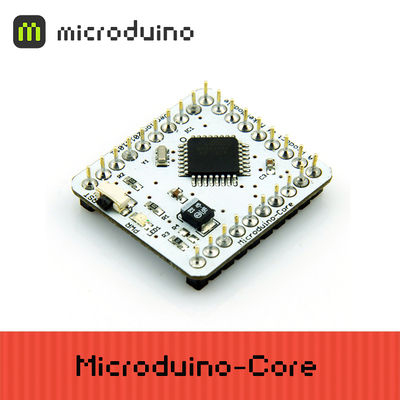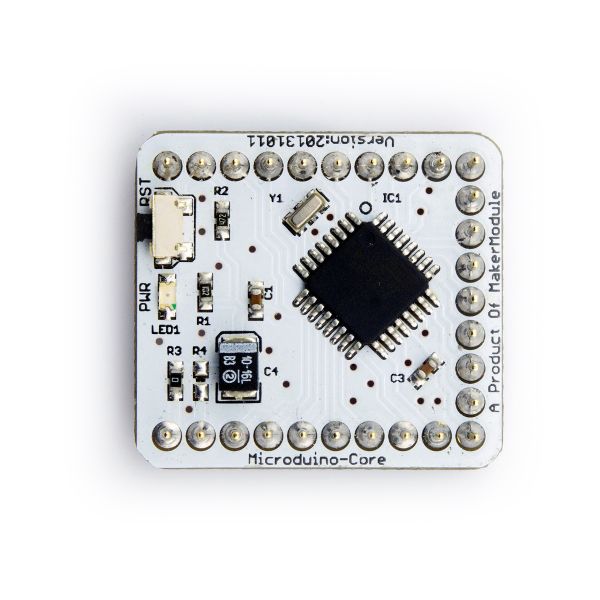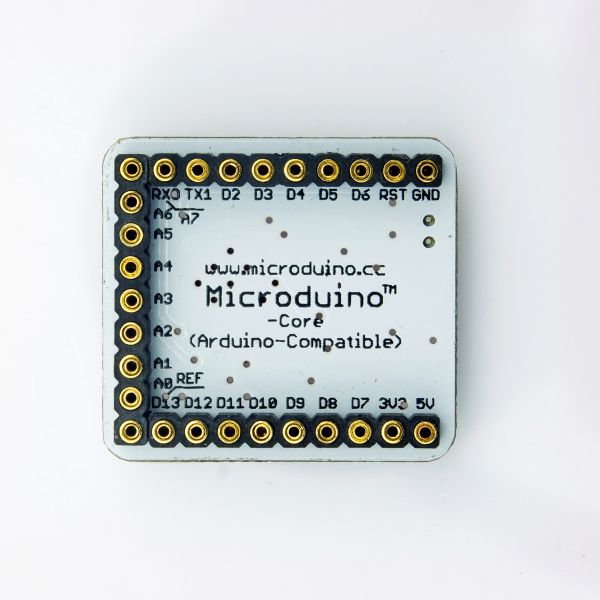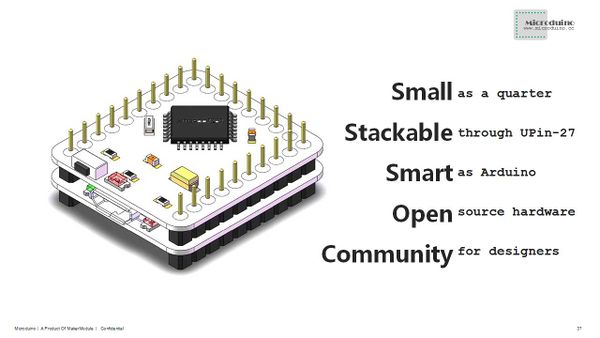|
Microduino-CoreSTM32 is one of core modules of Microduino series, Microduino-CoreSTM32 is an open source hardware and Maple Mini compatible. It is an 32-bit ARM Cortex-M3 development board, based on STMicroelectronics' STM32F103CBT6 chip.
Features
- Small, Stackable, Strong
- Open source hardware, using the same development environment as Arduino IDE
- Using the U-Shape 27-pin interface (UPin-27), the standard interface of Microduino series
Microduino modules and sensors can be easily stacked and extended through it
- Delivered ready to plug in.
- 2.54mm (0.1 inch) pin pitch, compatible to bread board and hole board
|
Specifications
- Microcontroller: STM32F103CBT6
- Speed: 72MHz
- Operating Voltage: 5V
- Core Voltage: 3.3V
- Flash: 128KB
- SRAM: 20KB
- Digital I/O Pins: 14 (of which 6 provide PWM output with D3,D5,D6,D9,D10 and D11)
- Analog Input Pins: 8 (2 more comparing to Arduino Uno)
- DC Current per I/O Pin: 40 mA
- DC Current: 50 mA
- Serial: 0 (RX) and 1 (TX). Used to receive (RX) and transmit (TX) TTL serial data.
- External Interrupts: 2 and 3. These pins can be configured to trigger an interrupt on a low value, a rising or falling edge, or a change in value. See the attachInterrupt() function for details.
- PWM: 3, 5, 6, 9, 10, and 11. Provide 8-bit PWM output with the analogWrite() function.
- SPI: 10 (SS), 11 (MOSI), 12 (MISO), 13 (SCK). These pins support SPI communication using the SPI
library.
- TWI: A4 or SDA pin and A5 or SCL pin. Support TWI communication using the Wire library.
- AREF. Reference voltage for the analog inputs. Used with analogReference().
- Flash Memory 32 KB (ATmega328P) of which 0.5 KB used by bootloader
- SRAM 2 KB (ATmega328P)
- EEPROM 1 KB (ATmega328P)
- Clock Speed 16MHz(5V) / 8Mhz(3.3V)
|
Documents
|
Development
- Microduino Arduino IDE Configuration
- 1. Install Arduino IDE: Microduino use the same IDE as Arduino, please download Arduino IDE from 【Arduino IDE official】 and install it in your disk. (if you already have it, just skip this step). Please check Arduino IDE details from 【Reference】 and 【Workshop】.
- 2. Patch Microduino package: Please download Microduino package for Arduino IDE from 【download】, and unzip is to {Your Arduino Install Driectory}/hardware directory.
- Microduino Arduino IDE Reference workshop: 【Arduino IDE Microduino Configuration】.
- 3. Programming: To upload program to Microduino-Core/Core+ through Arduino IDE, designers are recommended to use Microduino-FT232R module.
- 4. Enjoy your Microduino journey!
- Burn Microduino BootLoader
- Bootloader burning is necessary if designers want to update Microduino-Core/Core+ firmware by themselves, designers can leaverage Arduino Uno or another burned Microduino-Core/Core+ to make a new one.
- Microduino bootloader workshop: 【Burn Bootloader to Microduino-Core/Core+ with an Arduino】.
- Bootloader is specified for different Microduino-Core/Core+ configurations, correct one must be selected during burning.
- Initial bootloader is designed for ATmegaX8 series optiboot, which occupies only 512 bytes flash.
|
Applications
- room-Microduino
- obdii-Microduino
- pilot-Microduino
- green-Microduino
- music-Microduino
|
Buy
|
History
- 2012/12/16: Published Microduino-Core patch for Arduino IDE
- 2012/11/18: Optimized the first formal release, finalized Miroduino-Core configuration
- 2012/11/06: Beta version.
|
Pictures
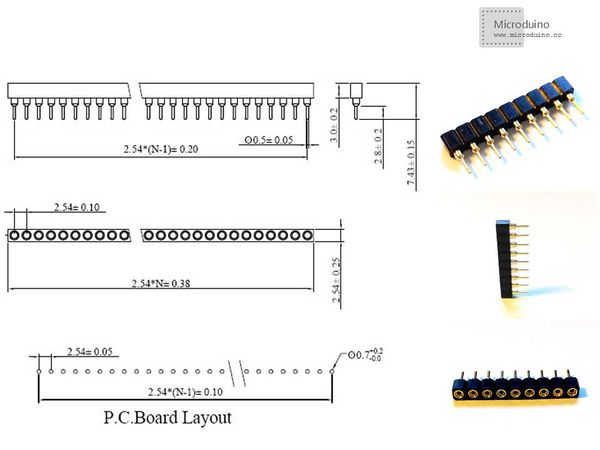 Microduino-core Upin27 model
|
